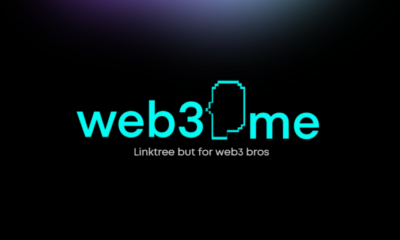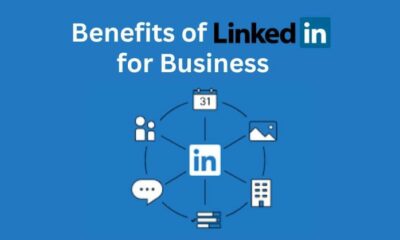Tech
How to Get Job Offers by Optimizing Your LinkedIn Profile
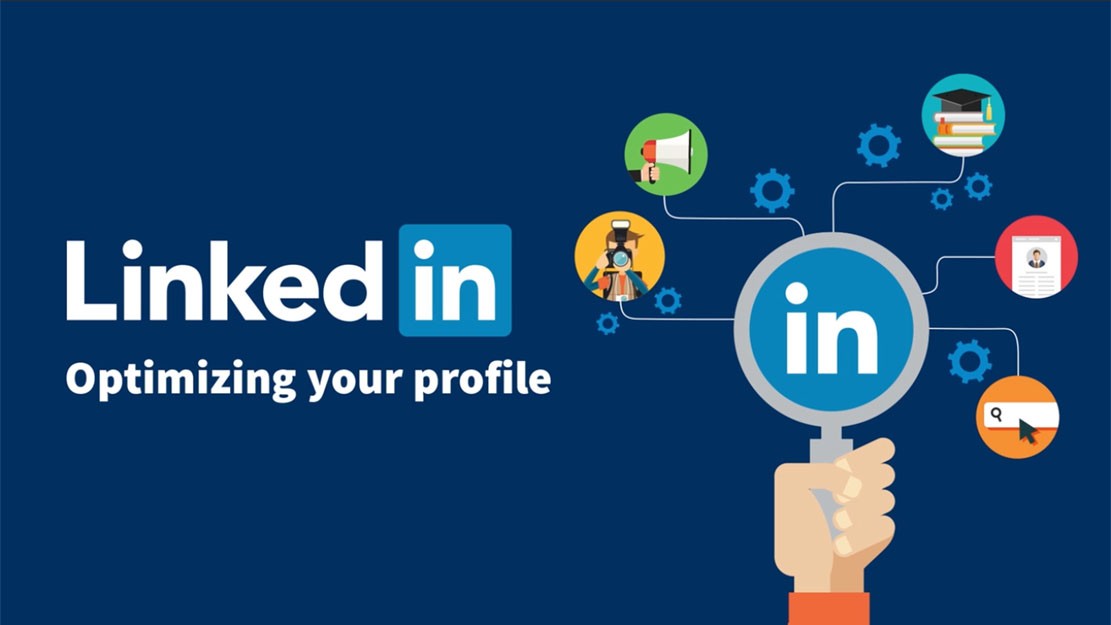
Now is the time to optimize your LinkedIn profile seriously. Check out some LinkedIn profile optimization tips.
This manual will demonstrate you:
- What use does optimizing a LinkedIn profile serve?
- How to improve the effectiveness of a LinkedIn profile through optimization?
- Tips on how to regularly optimize your LinkedIn profile.
Learn how to improve the way that employers view your LinkedIn page by reading on.
What Is an Optimized LinkedIn Profile?
First, let’s discover this mystery!
Your personal page on LinkedIn, optimized with all the sections filled in with details about your background and areas of expertise, is your LinkedIn profile.
It’s an extremely well-polished LinkedIn profile, designed to attract attention from other users and achieve a higher search engine ranking.
Well, but is it really worth the time to work on making your profile better? Let’s look into them.
Why Is Optimizing Your LinkedIn Profile Important?
Over 200 million Americans use LinkedIn, according to the company itself. Isn’t that a remarkable figure?
Thus, picture a headhunter exploring these pages in hopes of identifying a qualified applicant for a job. They have to approach it strategically because there is no way in the world that they can view every single profile.
And they do; they filter the search results when looking for candidates. In this manner, they view profiles that meet the required parameters. A headhunter won’t be able to view your LinkedIn page if it lacks the information they need to see.
For you, what does that mean? You may receive fewer job offers per day than other people. You probably pass up opportunities that other LinkedIn users with comparable qualifications get. And I’m not saying that to make you feel FOMO; after all, your career is on the line.
You now understand the significance of LinkedIn optimization. And I’ll walk you through the process in the upcoming chapter.
22 Tips for LinkedIn Profile Optimization in 2024
This is a helpful list of ideas for LinkedIn optimization. Some are simple and quick to complete; they only take a few minutes.
Others demand a great deal more work from you. The good news is that it’s not something you have to do in one sitting. LinkedIn page optimization is a continuous process. What matters is that you get started right away.
- Begin with a professional profile photo
No, you can succeed in your chosen career without having perfect features. However, people are unable to refrain from judging others by their appearance. Additionally, the evaluation goes beyond personal taste in art.
Indeed, a recruiter is likely to try to infer your personality from your profile photo if they think it conveys enough information about you.
Firstly, the specifics of a business profile photo on LinkedIn:
- 400 x 400 pixels is the ideal size for a LinkedIn photo. Larger ones can also be uploaded, but they are limited to 8 MB.
- About 60% of the image should be taken up by your face.
- The picture needs to be well-lit and crisp. Make sure it’s current and that people can recognize you.
- Here’s where it gets tricky: your picture needs to professionally represent who you are. And that relies on the career path you’ve taken. A CEO of a company will have a different profile picture than a fashion model.
Therefore, unless you’re naturally defying the rules, choose a photo that accurately represents what people would expect from someone in your line of work. Strive for a natural expression to convey seriousness or a self-assured smile to convey openness.
If none of your pictures work, think about investing in a professional headshot. It’s a bit expensive, but it might be worthwhile if it opens up more work options.
- Include a Background Image to Grab Attention
You can promote your business persona for free by using the background image on your LinkedIn page.
Of course, it’s okay if you’d just like to upload a picture of your preferred mountain vista. To entice recruiters to stay on your page longer, I suggest optimizing the LinkedIn background image and posting it to other social media sites.
Here’s how to create a background for your page that grabs attention:
Select a picture that best captures your work: It could be a real picture of you at work, but it could also feature your place of business, your services, your home city, or something related to your line of work. You can use an attribution-free image from websites like Pexels or Pixabay if you’re not good at taking pictures.
Create a banner that highlights your personal brand by using it to create a banner with text instead of uploading a picture. You can share your proudest professional accomplishment, include a motivational saying, enumerate the services you offer, or provide your contact details. Consider it to be a larger business card. Try making your image with online apps like Canva.
Observe technical specifications: a JPG or PNG file should contain your optimized LinkedIn profile image. Its ideal dimensions are 1584 x 396 pixels, and its maximum file size is 8 MB.
Always verify that your newly uploaded image appears correctly on computer and smartphone screens after uploading it. Try a different image if it’s hazy or has noticeable pixels.
- Write a headline that says it all.
Your LinkedIn page’s headline can be up to 220 characters. Use them wisely—don’t waste this space stating, “Hi, my name is Lisa, and I work in PR.”
This short introduction, like a captivating resume headline, should incorporate important keywords that highlight your talents, qualifications, and most proud successes.
Here’s what to write in your LinkedIn headline:
- Your current job title and company
- What can you offer to an employer?
- Career achievements
- Educational level
- Names of important certifications
- The industry for which you work
- Professional skills
- Lifelong passions
- Optimize your LinkedIn profile URL
If you have not yet edited your profile URL, you should do so. Does it contain random numbers or letters? Then, optimize your LinkedIn URL such that it displays your full name or brand name.
This is how you do it:
- On your profile page, click “Edit public profile & URL” in the top right corner.
- Look in the top right corner of the new page for the box labeled “Edit your custom URL.”
- Click on the pencil icon next to the URL.
- Fill it with your preferred text, which can include up to 100 letters or digits.
- Use the LinkedIn Profile Summary to Introduce Yourself
If you’ve ever written a resume summary, you’ll understand how to approach this one. And if you haven’t, this is an opportunity to learn.
A LinkedIn profile can reflect your vision, ambitions, and hobbies in addition to providing an overview of your qualifications.
A smart (and optimized) LinkedIn summary should include three to five sentences that summarize your professional background, what you specialize in, what firms or organizations you’ve worked for, and what distinguishes you. It has to fit 2,600 characters, or around 370 words.
As you can see, there is no need to create a full biography. Instead, aim for an elevator pitch. However, if you think a lengthier introduction is preferable for you, go for it!
Remember that most page users will just read the first two to three phrases of your profile summary. If you want them to continue reading, you must be captivating.
- Include Career Highlights in the Experience Section
One of the main sections of your LinkedIn page is dedicated to professional experience, much like the work experience section of a resume.
You can add your current and previous positions, as well as information about your employment responsibilities.
Nevertheless, including information about all of your former employment and activities may necessitate a great lot of effort, so approach this carefully.
Enhance Your Profile’s Experience Section
Here’s how to boost your LinkedIn profile’s Experience section:
- Add positions that are relevant to your present professional aspirations. For example, if you’re a certified nurse with ten years of experience, you don’t have to disclose your part-time babysitting job in high school.
- Demonstrate achievements right away: If you add many jobs, your Experience section will only display one or two lines for each job unless the reader clicks “see more.” Include important accomplishments in the first line to ensure that recruiters read everything.
- Use action words and accomplishment sentences. Add three to six sentences describing your responsibilities in each job, along with facts and figures to demonstrate how well you performed in your jobs.
- Use industry keywords: If you want to receive specific job offers, make sure to include relevant keywords in your Experience section. In this guide, I’ll go into greater detail about keywords.
- Use bullet points and special characters. You can use special characters like bullet points or arrows, as well as emojis, to describe your experience. They can assist separate lines of text and make information more readable. Of course, don’t overuse your favorite emojis!
It’s also a good idea to look over the profiles of people in your network to see what they’ve accomplished. Look for influencers in your sector and study their profiles. They may have some unique and inspiring ideas that you may use.
- Use Keywords to Make Your Page More Visible
Keywords on your LinkedIn page help headhunters find you in the same way that resume keywords do. As I previously stated, most recruiters utilize LinkedIn to identify interesting profiles and then use filters to limit down the candidate pool to a manageable number.
How to enhance your LinkedIn profile with keywords:
- Create a list of terms that best describe you professionally. Write down words that represent your job, your area of expertise, and the industry you work in.
- Seek industry keywords: The simplest method is to Google [industry] + keywords. Select the ones that are relevant to your experience.
- Analyze job offers that interest you. Job postings are the most effective source of keywords. Keywords you can include on your LinkedIn page include the position name, location, required skills and experience, and description of duties.
- Add keywords to your LinkedIn summary. Make bullet points listing your skills and the opportunities you’re looking for.
- Use keywords in the experience section. For example, you can include your specialties immediately following your job title: Quality Analyst — SEO Content, UX Writing. Also, make sure to include relevant keywords in your job descriptions.
- Publish posts with keywords: Share your achievements, discuss industry news, and disseminate interesting information about your local area; just make sure that your posts include keywords related to business opportunities that interest you.
Adding keywords to your LinkedIn page is a continuous process. It’s a good idea to take a critical look at your profile on a regular basis and identify a few things you may easily improve.
- Select the Right Skills to Represent You
The Skills section is another essential part of your profile. You can add up to 50 competencies, which seems like a lot. But what are the ideal abilities to highlight on your LinkedIn page? You may read dozens of online articles telling you which are most in demand, but the truth is:
You should include talents that can be demonstrated through your experience or education.
Your abilities must be relevant to the job opportunities you seek.
Here’s how to maximize your LinkedIn profile’s Skills section:
- Include industry-related hard skills that you have mastered: If you have completed other sections of your profile, LinkedIn will automatically suggest talents based on your information.
- Read through job offers to find additional skills to add: There’s a chance you haven’t considered a competence that you believe is obvious but is in high demand at numerous firms.
- Choose soft skills that match your job profile. They complement your professional qualities well.
- If you can’t think of 50 skills to add right away, that’s alright. You can always add other competencies later.
- Avoid LinkedIn Profile Cliches
If you look through your LinkedIn feed regularly, you’ve probably come across a few cliches. For example, someone who describes herself as a revolutionary inventor or a visionary girlboss.
When optimizing your LinkedIn profile, it’s best to avoid such worthless sentences and use keywords, which add significantly more value to your page.
If you really want to use hyperbolic words and phrases, be sure you have the necessary achievements and professional experience to make it work. You can add one or two extra words to make your profile more unique.
- Grow Your Network
Did you know you may create up to 30,000 first-degree connections on LinkedIn? Thirty. Thousand. Connections. I’m not going to lie; my network is significantly smaller.
So, what is the goal of expanding your network, exactly? It makes your profile more visible in LinkedIn search results. This is because the results only include persons in your first, second, and third-degree connections.
A larger network allows more potential headhunters and companies to find you when they are looking for recruits. And, whether you’re a business owner or entrepreneur, more connections equals more potential leads.
What amount of connections should you strive for? That is not easy to say. Some business influencers recommend 500, while others suggest 1,000 to 3,000 connections. If you start from zero, that’s a lot.
But the thing about LinkedIn is that many people are willing to accept connections even if they do not know you personally.
You can connect with not only coworkers and school friends, but also previous clients, industry recruiters, influencers, and so on. Aim for 10 connections per day, and you’ll have 300 extra in a month. It is the easiest networking activity on the planet.
- Promote Yourself Through Posts
Each LinkedIn user is able to create posts. However, few individuals do, despite the fact that it is a fantastic way to showcase your skills.
Begin posting posts about your professional life after you’ve completed the LinkedIn optimization methods outlined above.
Did you receive a promotion? Share the news. Have you completed any work that you are particularly proud of? Write and submit photos. Did you have a nice business meeting with a client? Mention them. Have you completed a new online course? Brag about it.
You can also recommend inspiring books, discuss interesting articles you discovered online, and even upload a photo of your favorite coffee shop. And if you want to leave your current work and start over, this is the best place to declare you’re looking for business opportunities.
Your LinkedIn posts reach beyond your network, appearing in the feeds of second and third-degree connections. So there’s a good chance someone looking for job candidates will come across your post.
- Fill out the Services Section
Are you a business owner or a freelancer? Then LinkedIn has a feature designed specifically for you: the Services section.
Choose a few areas of expertise and write up to 500 characters on what distinguishes your company from competitors. You can also include pricing information and specify how clients can submit requests.
- Increase the Number of Sections to Compensate for No Work Experience
What is the best way to write a CV without any work experience? Show that you have experience from non-work activities. The same goes for your LinkedIn page. If you’re a recent graduate, adding more LinkedIn sections can be really useful.
How to optimize a LinkedIn page with no work experience:
- In the profile headline, highlight your educational level and main study emphasis.
- Tell them right away that you are looking for work in a specific field.
- Fill up the Education section of your profile with details on your degree, extracurricular activities, university projects, scholarships, and any related curriculum in which you excelled.
- Include skills that are relevant to the job you’re pursuing.
- Use the “Recommended” and “Additional” profile sections to highlight your qualifications, such as licenses and certificates or volunteer experience.
After that, make sure to update your profile on a regular basis to demonstrate that you are constantly working to develop your knowledge and obtain professional experience.
- Try Skills Assessment Tests
LinkedIn provides various methods of demonstrating your vital skills. Many users prefer Skills Assessment tests, which are ideal for proving hard skills like Microsoft Excel expertise or programming languages.
To receive a skill badge, you must achieve a score in the top 30%.
A new tool lets you demonstrate your interpersonal skills. You can make a video or write a response explaining what transferable skills you’d use in a particular industry.
If you decide to use LinkedIn to apply for jobs, you can incorporate these responses in your application.
- Ask for Endorsement from Others
You’ve optimized your LinkedIn profile by adding 41 skills. However, it appears to be really mediocre. Fortunately, there is a way to improve it: seek endorsements from other users.
People in your LinkedIn network can approve your talents, confirming that you are a true expert in this field. You may do the same for others. It only takes a few clicks.
- Ask for recommendations.
Reference letters are still used, but not everyone is a fan. It is an outdated practice based on an unjust power dynamic between an employee and an employer.
On LinkedIn, however, recommendations are far less formal and more democratic. You can make recommendations to bosses, coworkers, and subordinates. You can also ask for recommendations from others.
Having a few recommendations on your page increases your credibility in the eyes of recruiters. They will be able to read what others have said about you and your work style.
- Identify Like-Minded Influencers
Even if you roll your eyes when you hear the term “influencer,” you must realize that they exist and contribute value to the field in which they specialize.
Each industry has its own pool of influential specialists, including thinkers, inventors, experienced professionals, published authors, podcasters, and so on.
Search for someone whose LinkedIn content you enjoy reading. Following influencers will keep you up to date on industry trends, job opportunities, and content to share with your networks.
- Interact with Your Network
LinkedIn is a social network, thus in order for it to be useful, you must interact with other users. Respond to their posts, comment on their achievements, and congratulate them on their new jobs. It will increase your visibility.
Sharing your opinions by commenting on other people’s posts might also help you expand your network. And a larger network means more business opportunities.
- Write and Publish Longer Posts
If you enjoy writing about your business or area of expertise, LinkedIn is the place to do it. Use posts to provide your own content and establish your authority as an expert.
Of course, just like any other type of online content, your longer posts must be engaging for readers. So, avoid using excessive industrial jargon, which may make the text harder to understand.
Rather than posting your 30-page research, write a post listing five reasons why it is significant and presenting the key results.
- Demonstrate Continuous Learning Efforts
It has never been easier to acquire knowledge. The majority of individuals can access and afford online courses. LinkedIn also has its own platform, which is jam-packed with development content.
Whenever you finish a new course, attend a workshop, or receive a certificate, write about it. It will show recruiters that you are aiming for excellence.
- Share Your Ideas in the Publications Section
Do you regularly publish your work elsewhere? Maybe your research got into a prestigious journal? Add a Publications section to your LinkedIn page.
Here, provide the details about your work, share a link to the website that published it, and add a description to say what it’s all about.
- Try the Creator Mode to Build an Audience
Let’s say you’ve been using LinkedIn actively for a few months, and you find yourself publishing more and more posts. Consider switching to Creator mode.
It won’t automatically turn you into an influencer, but it will give you access to creator tools and analytics, as well as display your own content higher on your profile page.
OK, admit it — that’s a lot of ideas you can use to optimize your LinkedIn page.
What should you do now? I recommend going through the list and picking three ideas you can implement straight away, such as editing your profile headline, writing a new summary, and adding keywords. That will be a good starting point.
Then, try to spend at least an hour each week on LinkedIn optimization efforts, plus a few minutes each day to interact with the people in your network. It will greatly improve your visibility for headhunters.
What should you do now? Going through the list and picking three ideas you can implement straight away, such as editing your profile headline, writing a new summary, and adding keywords. That will be a good starting point.
Then, try to spend at least an hour each week on LinkedIn optimization efforts, plus a few minutes each day to interact with the people in your network. It will greatly improve your visibility for headhunters.
-
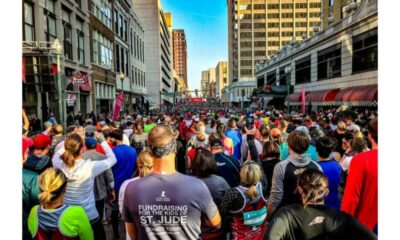
 Business2 weeks ago
Business2 weeks agoNayef Doleh Examines International Humanitarian Fundraising Strategies
-
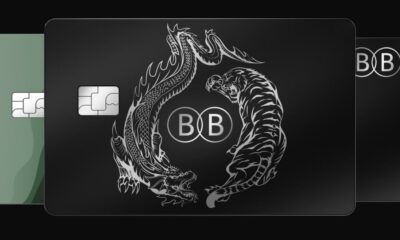
 Business3 weeks ago
Business3 weeks agoHow Black Banx is Redefining Global Banking Strategies in 2025
-

 Business2 weeks ago
Business2 weeks agoHow to fill MSME Form 1? Step-by-Step Guide
-
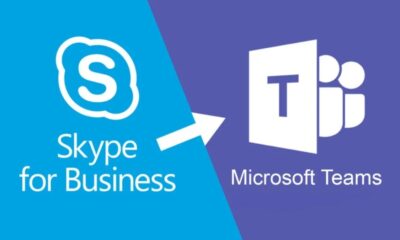
 Tech4 weeks ago
Tech4 weeks agoHow to Switch Between Microsoft Teams and Skype, How To Export Messages, Files, and Contacts from Skype Before It Shutting Down
-
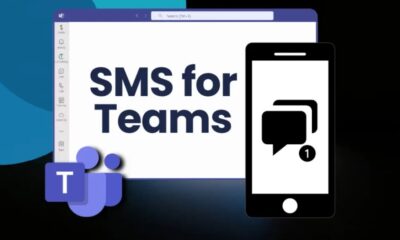
 Tech3 weeks ago
Tech3 weeks agoMicrosoft Teams to End SMS Messaging Feature Support for Android Phones and Switch to Phone Link App as Alternative
-
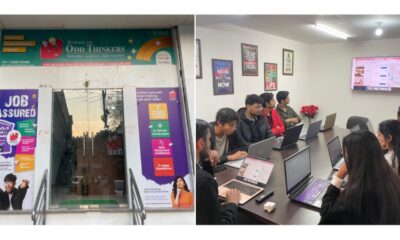
 Education3 weeks ago
Education3 weeks agoSchool Of Odd Thinkers – Think Odd, Learn a lot, and Earn a lot
-

 Education3 weeks ago
Education3 weeks agoThe Power of Differentiated Instruction: Patrick Granfar Discusses Its Impact on Student Learning
-

 Education3 weeks ago
Education3 weeks agoJeffrey Laino Offers a Close Look at Literary Analysis Implementation









